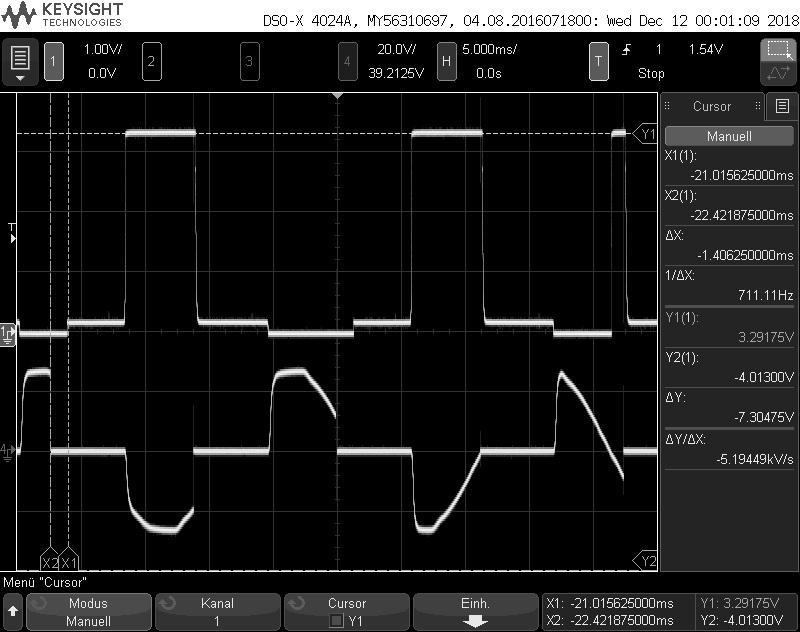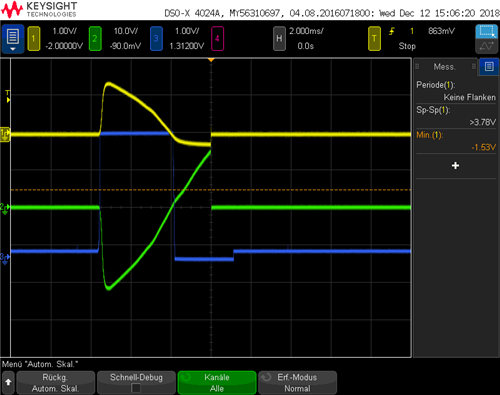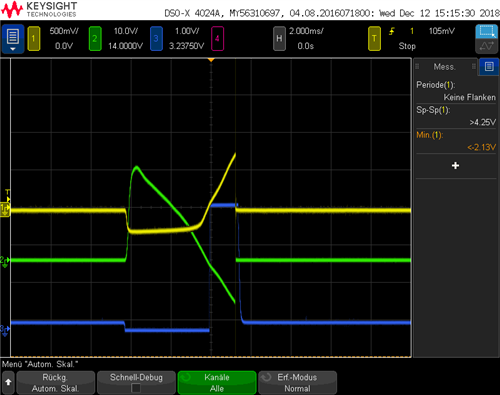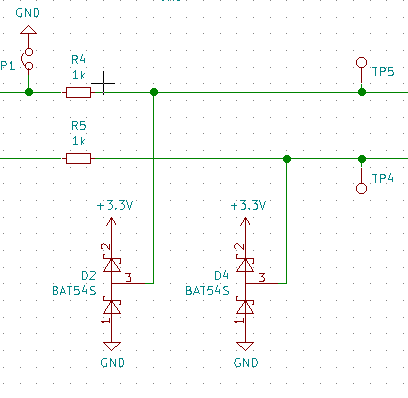Other Parts Discussed in Thread: OPA376, OPA330
Hello dear Developers,
I am using an OPA333 as a non inverting Amplifier with Gain of ~100 3.3V Single Supply. Both Inputs are Protected by BAT54S.
The voltage on the positive input swings from +24V to few mV to -24V, so the Output saturates and than recovers all the time. But with different recovery times from positive and negative overdrive.
If the positive input is coming from +24V the output recovers from 3.3V to 400mV in less than 200us, witch is fine for me, but if the positive input is at negative voltages and comes back to 4mV the output takes upto 2ms to recover.
I missed to make some better screenshots but i was busy understanding whats happening :D
The top signal shows the output of the OPA333, the bottom signal is NOT the voltage on the positive input, BUT it is the INVERTED positive input voltage. You can clearly see the difference in recovery time from positive and negative voltages.
Why is there a recovery time at all and why is it not on both polarities, or am i on the wrong path at all?
Update: I got myself hooked up once again to check the true input voltages at the opamp inputs. As you can see the voltage on the positive input does NOT reach the 3.3V at peak, but does go below 0V at minimum, this explains the difference in recovery time.
Green switched AC Voltage
Blue: output of the opamp, should be xxxmV
Yellow: positive input of the opamp
On the left is the positive input negative so clipped and when back to normal it takes some ms fot the opamp back to normal output
On the right the positive input is never clipped and so the opamp takes much less time to recover






